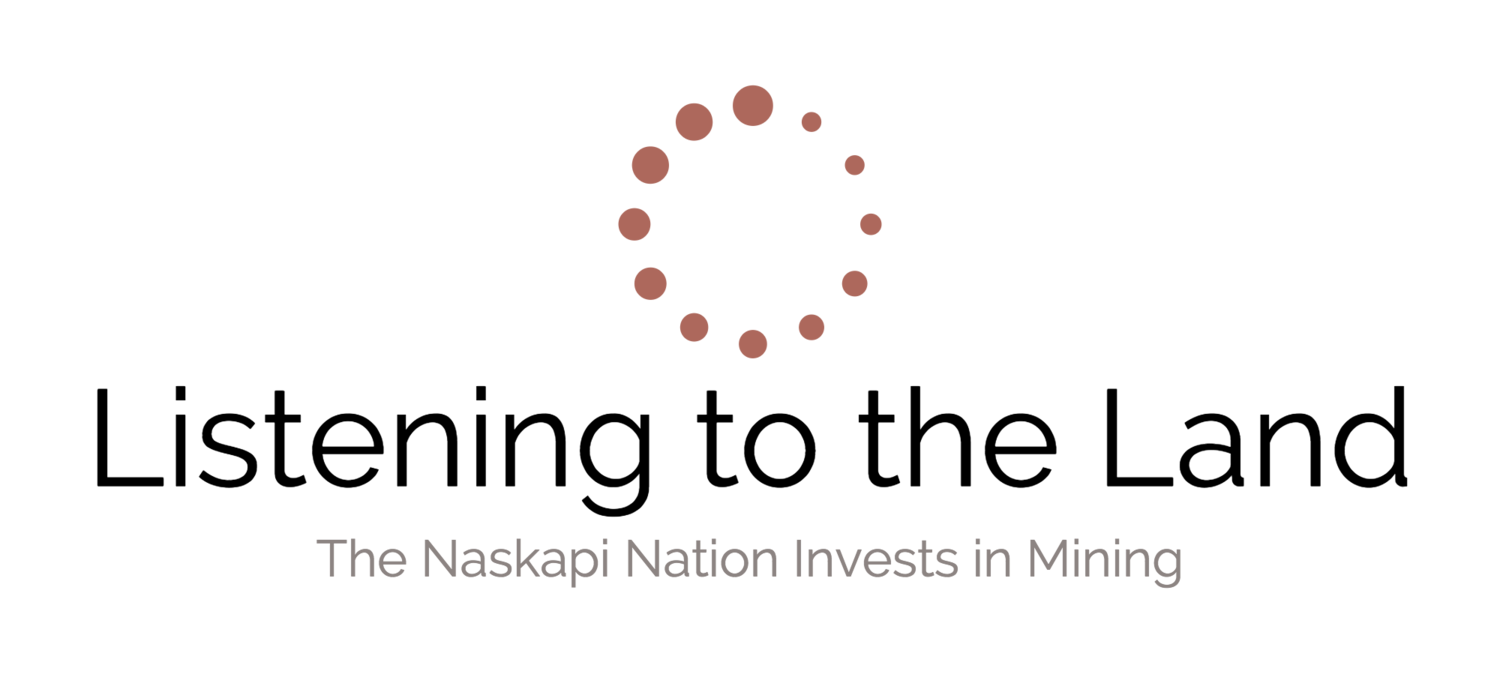The complexities of translation and the intricacies of cultural distinctions are highlighted by this sign, for many years posted on the way to the mine with Naskapi, Innu, English and French languages.
Bill Jancewicz writes:
This sign, though it has disappeared in recent years, was for decades posted along the road between Schefferville and the mine site.
The top line is in Innu-aimun (Montagnais) and reads akua tuta nitassinan ‘be careful with our (excl) land’.
The second line is French, Protegeons notre environnement ‘let us protect our environment’ and the third line is English.
The bottom line is in Naskapi and reads ᒥᔪᓇᑲᑐᐛᐃᑕᑕᐅ ᔅᑎᔅᒋᓄ miyunakatuwaaiitaataau stischinuw ‘let us care for our (incl) land’.
Even though this sign was painted and transcribed in Naskapi prior to the orthographic standardization described in detail in other sections of this thesis, there is enough detail to show a significant difference in the grammatical structure of the word ‘land’ for Naskapi and Montagnais.
In Montagnais, the word assi ‘land’ is inflected with a prefix and suffix that indicates to the reader that the land thus referred to is “ours,—but not yours.” The word nit‑assi‑naan ‘our land’ is first person plural exclusive.
However, in Naskapi, the word aschiy ‘land’ is inflected with a different prefix and suffix that indicates to the reader that the land thus referred to is “ours,—yours and mine together.” The Naskapi word (here spelled phonologically) chit‑aschi‑nuw ‘our land’ is second person plural inclusive.
For the Naskapi, there was a conscious choice of the different grammatical structure used for the “same” lexical item “land” reveals something of the unique Naskapi speaker attitude towards the land.
- Adapted from his thesis, "Grammar Enhanced Biliteracy: Naskapi Language Structures for Facilitating Reading in Naskapi." Master's thesis, University of North Dakota, 2013. https://arts-sciences.und.edu/academics/summer-institute-of-linguistics/theses/_files/docs/2013-jancewicz-william.pdf

